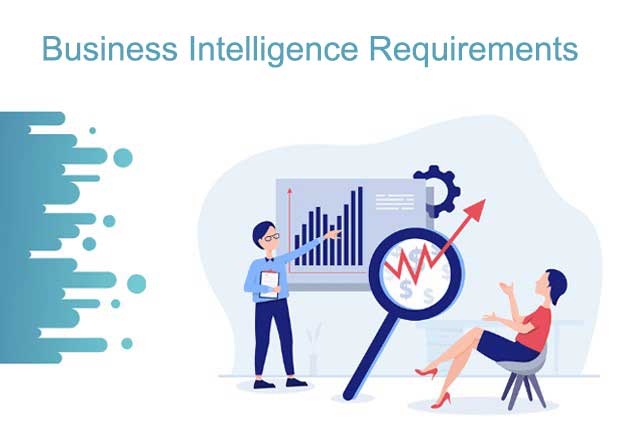Business Intelligence (BI) requirements are the foundation for developing an effective BI solution that meets the needs of an organization. Gathering and documenting these requirements involves understanding the objectives, goals, and challenges of the organization, as well as the specific needs of stakeholders who will use the BI system. Here’s a breakdown of key components to consider when defining BI requirements:

1. Business Objectives and Goals:
- Define Objectives: Identify the overarching business objectives that the BI solution aims to support. These could include improving decision-making, increasing operational efficiency, or enhancing customer satisfaction.
- Align with Strategy: Ensure that BI requirements align with the organization’s overall strategic goals and initiatives.
2. Stakeholder Needs:
- Identify Stakeholders: Engage with stakeholders across different departments and levels within the organization, including executives, managers, analysts, and end-users.
- Understand Requirements: Gather input from stakeholders to understand their specific BI needs, challenges, and pain points.
3. Data Requirements:
- Data Sources: Identify the types of data needed for analysis, including internal sources (e.g., transactional databases, ERP systems) and external sources (e.g., market data, social media).
- Data Quality: Define data quality standards and requirements to ensure that the data used for analysis is accurate, complete, and reliable.
- Data Integration: Determine how data from different sources will be integrated and consolidated to provide a unified view for analysis.
4. Functional Requirements:
- Reporting and Analysis: Define the types of reports, dashboards, and analysis capabilities needed to support decision-making and business operations.
- Ad-Hoc Querying: Specify whether users require the ability to perform ad-hoc queries and explore data in real-time.
- Predictive Analytics: Determine if predictive modeling and forecasting capabilities are needed to anticipate future trends and outcomes.
5. Non-Functional Requirements:
- Performance: Define performance requirements related to data processing speed, query response times, and system scalability.
- Security: Specify security requirements to protect sensitive data and ensure compliance with regulatory standards (e.g., GDPR, HIPAA).
- Usability: Define usability requirements to ensure that the BI solution is intuitive and easy to use for all stakeholders.
6. Integration and Compatibility:
- Integration with Existing Systems: Determine how the BI solution will integrate with existing systems and applications within the organization’s IT landscape.
- Compatibility: Ensure that the BI solution is compatible with different operating systems, devices, and browsers used by stakeholders.
7. Training and Support:
- User Training: Define training requirements to ensure that stakeholders are proficient in using the BI solution effectively.
- Technical Support: Specify the level of technical support and maintenance needed to address issues and troubleshoot problems with the BI system.
8. Regulatory and Compliance Requirements:
- Compliance Standards: Identify regulatory requirements and compliance standards that the BI solution must adhere to (e.g., data privacy regulations, industry-specific regulations).
- Auditability: Define requirements for auditing and tracking data access and usage to ensure compliance with regulatory standards.
9. Scalability and Future Growth:
- Scalability: Ensure that the BI solution is scalable and capable of accommodating future growth in data volume, users, and analytical complexity.
- Flexibility: Define requirements for flexibility and adaptability to accommodate changes in business needs, technologies, and industry trends over time.
10. Documentation and Governance:
- Requirements Documentation: Document all BI requirements in a comprehensive requirements document, including descriptions, acceptance criteria, and dependencies.
- Governance Framework: Establish a governance framework for managing BI requirements, changes, and priorities throughout the project lifecycle.
Conclusion:
Defining clear and comprehensive BI requirements is essential for the successful development and implementation of a BI solution that meets the needs of the organization. By considering business objectives, stakeholder needs, data requirements, functional and non-functional requirements, integration and compatibility, training and support, regulatory compliance, scalability, and documentation, organizations can ensure that their BI solution delivers actionable insights and drives business success.